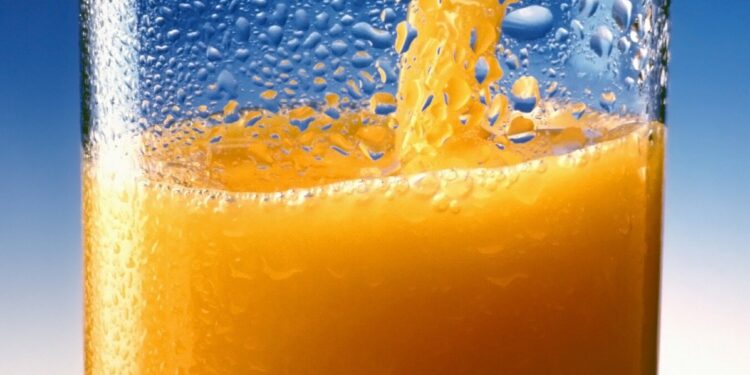Credit: Pixabay/CC0 Public Domain
As Rohit Velankar, now a senior at Fox Chapel Area High School, poured juice into a glass, he could feel the rhythmic “glug, glug, glug” flexing the sides of the carton.
Rohit thought about sound and wondered if the elasticity of a container influenced how its liquid flowed. He initially sought the answer to his question for his science fair project, but it took a deeper turn when he teamed up with his father, Sachin Velankar, a professor of chemical and petroleum engineering at the University of Pittsburgh’s Swanson School of Engineering.
They set up an experiment in the family basement and their results were published in their first-ever paper together as father and son.
“As a scientist, I was very involved in the project,” Sachin Velankar said. “We agreed that once the experiments started, we should complete them.”
The article is published in the journal Fluid physics.
The science behind the glug
Rohit’s early experiments showed that deli containers with rubber lids emptied faster than those with plastic lids.
“Glugging occurs because the water that comes out tends to reduce the pressure inside the bottle,” Velankar said. “When the container is very flexible, like bags that hold intravenous fluids or boxed wine, the container may be able to dispense fluid without glugging. But there are other types of bottles that are flexible, so their elasticity must surely affect its drainage.”
They created their own ideal acrylic bottles with rubber lids using tools available in the Fox Chapel Area High School makerspace. A sensor was placed near a hole in the bottom of each bottle to measure pressure fluctuations with each sip. The Velankars were able to simulate flexibility by adjusting the diameter of the hole, confirming that flexible bottles emptied more quickly, but with larger and less frequent sips.
More information:
Rohit S. Velankar et al, Soft bottles empty faster but drink more slowly, Fluid physics (2024). DOI: 10.1063/5.0217553
Provided by the University of Pittsburgh
Quote:Science exhibition project leads to new research explaining the glugging effect (2024, September 10) retrieved September 11, 2024 from
This document is subject to copyright. Apart from any fair dealing for the purpose of private study or research, no part may be reproduced without written permission. The content is provided for informational purposes only.



